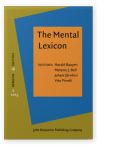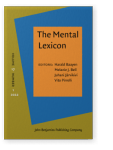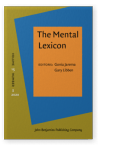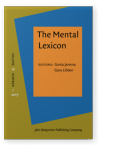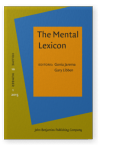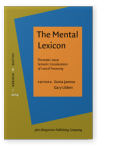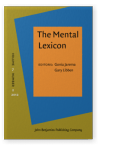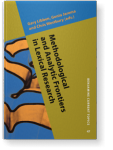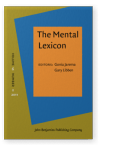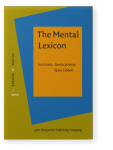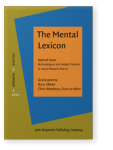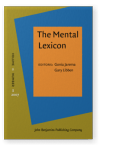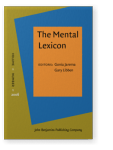Lee H. Wurm
List of John Benjamins publications for which Lee H. Wurm plays a role.
Journal
2022 Is it you you’re looking for? Personal relevance as a principal component of semantics The Mental Lexicon 17:1, pp. 1–33 | Article
Previous evidence has implicated personal relevance as a predictive factor in lexical access. Westbury (2014) showed that personally relevant words were rated as having a higher subjective familiarity than words that were not personally relevant, suggesting that personally relevant words are… read more
2020 3017: Six years in the life of an ill-fated neologism The Mental Lexicon 15:3, pp. 508–531 | Article
In this study we examined uses of the number 3017 as a neologism by members of an online forum. 3017 has a number of factors working against its success as a neologism, but its use grew dramatically over the course of six years. Statistical analyses showed that the growth data were very well… read more
2017 Effects of Danger, Usefulness, and Body-Object Interaction in picture naming The Mental Lexicon 12:1, pp. 51–70 | Article
Several previous studies have shown that the time-course of word recognition is determined in part by an interaction between connotations of Danger and Usefulness. A small, mostly separate literature has investigated the role of Body-Object Interaction (BOI) in lexical processing. BOI is defined… read more
2015 Auditory and visual processing of novel stimuli are affected by subjective connotations of Danger and Usefulness The Mental Lexicon 10:1, pp. 1–31 | Article
The automatic evaluation literature and the survivability memory enhancement effect (Nairne et al., 2007) suggest that stimuli might be automatically categorized along an approach/withdraw dimension. Duckworth et al. (2002) showed that such effects hold even for novel stimuli. The current study is… read more
2014 Semantic effects in word recognition are moderated by body-object interaction Semantic Considerations of Lexical Processing, pp. 1–22 | Article
A potential embodied influence in the semantic effects of Danger and Usefulness is investigated using Body-Object Interaction (BOI). Lexical decision times are influenced by ratings of Danger and Usefulness. In a frequently-found interaction, thought to be produced by activated approach-withdraw… read more
2012 Danger and usefulness effects as a function of concept ancientness The Mental Lexicon 7:2, pp. 183–209 | Article
Danger and Usefulness affect word recognition (e.g., Wurm & Vakoch, 2000), and a related construct affects memory (e.g., Nairne, Thompson, & Pandeirada, 2007). We tested hypotheses about differential effects of these dimensions, based on the relevance of concepts relative to the time perceptual… read more
2012 Stimulus norming: It is too soon to close down brick-and-mortar labs Methodological and Analytic Frontiers in Lexical Research, Libben, Gary, Gonia Jarema and Chris Westbury (eds.), pp. 93–104 | Article
Psycholinguists grapple with an ever-increasing list of control variables, in addition to any that are of theoretical interest. Some variables are subjective constructs like familiarity, concreteness, and semantic or affective connotations. Historically researchers approached these by having… read more
2011 Ratings gathered online vs. in person: Different stimulus sets and different statistical conclusions The Mental Lexicon 6:2, pp. 325–350 | Article
Barenboym, Wurm, and Cano (2010) recently showed that significant differences emerged for ratings gathered online and in person. They also showed that researchers could reach different statistical conclusions in a regression analysis, depending on whether the norms were gathered online or in person. read more
2010 Change detection: The effects of linguistic focus, hierarchical word level and proficiency The Mental Lexicon 5:1, pp. 47–86 | Article
A version of the change-detection paradigm was used to examine Good-Enough Representation (Ferreira, Bailey, & Ferraro, 2002). Participants read sentence pairs where a subject noun (e.g., flower) could change to a Superordinate (e.g., plant), Subordinate (e.g., rose), or an Unrelated (e.g., prince)… read more
2010 Stimulus norming: It is too soon to close down brick-and-mortar labs Methodological and Analytic Frontiers in Lexical Research (Part I), Jarema, Gonia, Gary Libben and Chris Westbury (eds.), pp. 358–370 | Article
Psycholinguists grapple with an ever-increasing list of control variables, in addition to any that are of theoretical interest. Some variables are subjective constructs like familiarity, concreteness, and semantic or affective connotations. Historically researchers approached these by having… read more
2007 Lexical dynamics for low-frequency complex words: A regression study across tasks and modalities The Mental Lexicon 2:3, pp. 419–463 | Article
In this study we examine the word recognition process for low-frequency morphologically complex words. One goal of the study was to replicate and expand upon findings suggesting facilitative effects of morphological relatives of a target word. A second goal was to demonstrate the need for a… read more
2006 Dynamics of the auditory comprehension of prefixed words: Cohort entropies and Conditional Root Uniqueness Points The Mental Lexicon 1:1, pp. 125–146 | Article
This auditory lexical decision study shows that cohort entropies, conditional root uniqueness points, and morphological family size all contribute to the dynamics of the auditory comprehension of prefixed words. Three entropy measures calculated for different positions in the stem of Dutch… read more
